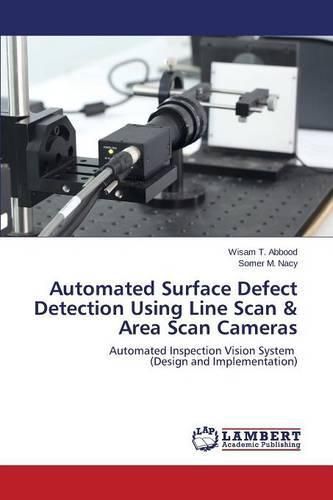Readings Newsletter
Become a Readings Member to make your shopping experience even easier.
Sign in or sign up for free!
You’re not far away from qualifying for FREE standard shipping within Australia
You’ve qualified for FREE standard shipping within Australia
The cart is loading…






This title is printed to order. This book may have been self-published. If so, we cannot guarantee the quality of the content. In the main most books will have gone through the editing process however some may not. We therefore suggest that you be aware of this before ordering this book. If in doubt check either the author or publisher’s details as we are unable to accept any returns unless they are faulty. Please contact us if you have any questions.
Development in industry is an important factor to increasing the production rate and quality inspection time. The automatic inspection vision system gives the real-time inspection for product. This work shows the design of an automatic inspection vision system. The principle work of area scan camera is to compare image capturing with the base image for product surface which already stored in the host-computer. This comparison will decide if the product will pass or will be rejected. The required results then can be implemented by using the Matlab software to compare the images. The accepted and rejected operations are controlled by the microcontroller (PIC16F84A) that regulates the product rejection after the image processing. The principle work of line scan camera is scanning the product surface via multi-line capturing through multi-triggers generated by the encoder. The defect detection is obtained by the difference in the light intensity for the surface of product with defect or not; Where the results are shown graphically by the LabVIEW software. The results of the line scan and the area scan are dependent on the intensity of light reflected from the product surface.
$9.00 standard shipping within Australia
FREE standard shipping within Australia for orders over $100.00
Express & International shipping calculated at checkout
This title is printed to order. This book may have been self-published. If so, we cannot guarantee the quality of the content. In the main most books will have gone through the editing process however some may not. We therefore suggest that you be aware of this before ordering this book. If in doubt check either the author or publisher’s details as we are unable to accept any returns unless they are faulty. Please contact us if you have any questions.
Development in industry is an important factor to increasing the production rate and quality inspection time. The automatic inspection vision system gives the real-time inspection for product. This work shows the design of an automatic inspection vision system. The principle work of area scan camera is to compare image capturing with the base image for product surface which already stored in the host-computer. This comparison will decide if the product will pass or will be rejected. The required results then can be implemented by using the Matlab software to compare the images. The accepted and rejected operations are controlled by the microcontroller (PIC16F84A) that regulates the product rejection after the image processing. The principle work of line scan camera is scanning the product surface via multi-line capturing through multi-triggers generated by the encoder. The defect detection is obtained by the difference in the light intensity for the surface of product with defect or not; Where the results are shown graphically by the LabVIEW software. The results of the line scan and the area scan are dependent on the intensity of light reflected from the product surface.